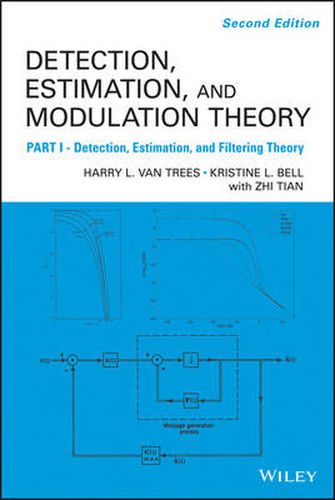Readings Newsletter
Become a Readings Member to make your shopping experience even easier.
Sign in or sign up for free!
You’re not far away from qualifying for FREE standard shipping within Australia
You’ve qualified for FREE standard shipping within Australia
The cart is loading…






Originally published in 1968, Harry Van Trees’s Detection, Estimation, and Modulation Theory, Part I is one of the great time-tested classics in the field of signal processing. Highly readable and practically organized, it is as imperative today for professionals, researchers, and students in optimum signal processing as it was over thirty years ago. The second edition is a thorough revision and expansion almost doubling the size of the first edition and accounting for the new developments thus making it again the most comprehensive and up-to-date treatment of the subject. With a wide range of applications such as radar, sonar, communications, seismology, biomedical engineering, and radar astronomy, among others, the important field of detection and estimation has rarely been given such expert treatment as it is here. Each chapter includes section summaries, realistic examples, and a large number of challenging problems that provide excellent study material. This volume which is Part I of a set of four volumes is the most important and widely used textbook and professional reference in the field.
$9.00 standard shipping within Australia
FREE standard shipping within Australia for orders over $100.00
Express & International shipping calculated at checkout
Originally published in 1968, Harry Van Trees’s Detection, Estimation, and Modulation Theory, Part I is one of the great time-tested classics in the field of signal processing. Highly readable and practically organized, it is as imperative today for professionals, researchers, and students in optimum signal processing as it was over thirty years ago. The second edition is a thorough revision and expansion almost doubling the size of the first edition and accounting for the new developments thus making it again the most comprehensive and up-to-date treatment of the subject. With a wide range of applications such as radar, sonar, communications, seismology, biomedical engineering, and radar astronomy, among others, the important field of detection and estimation has rarely been given such expert treatment as it is here. Each chapter includes section summaries, realistic examples, and a large number of challenging problems that provide excellent study material. This volume which is Part I of a set of four volumes is the most important and widely used textbook and professional reference in the field.